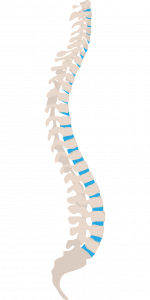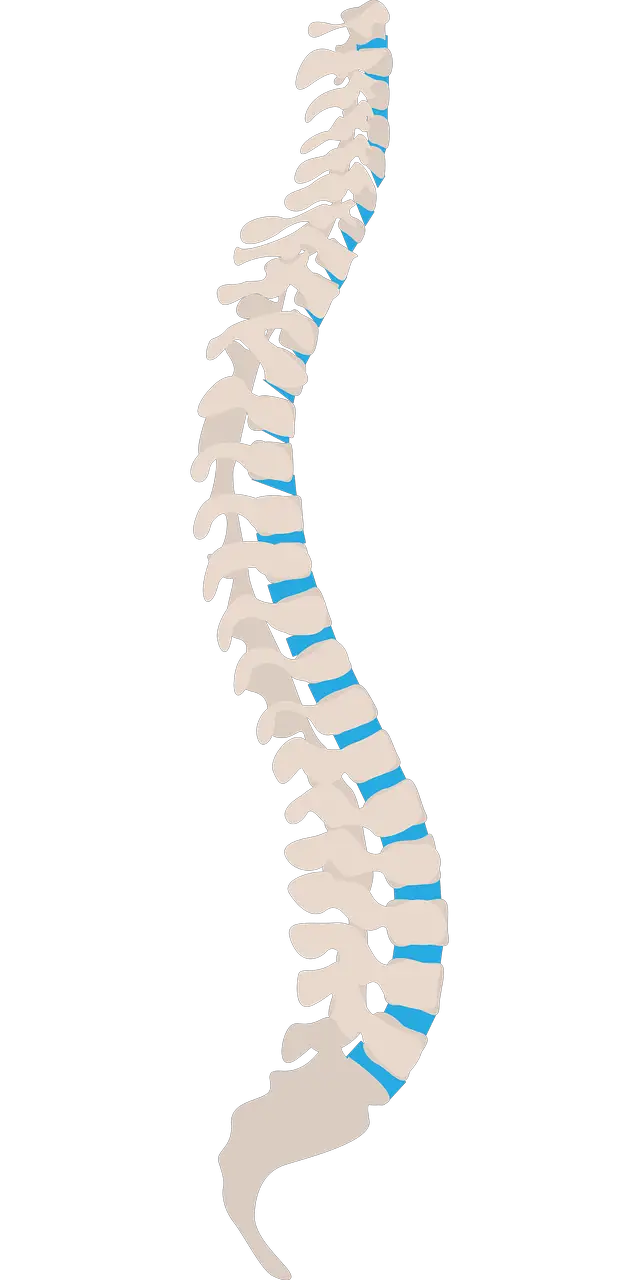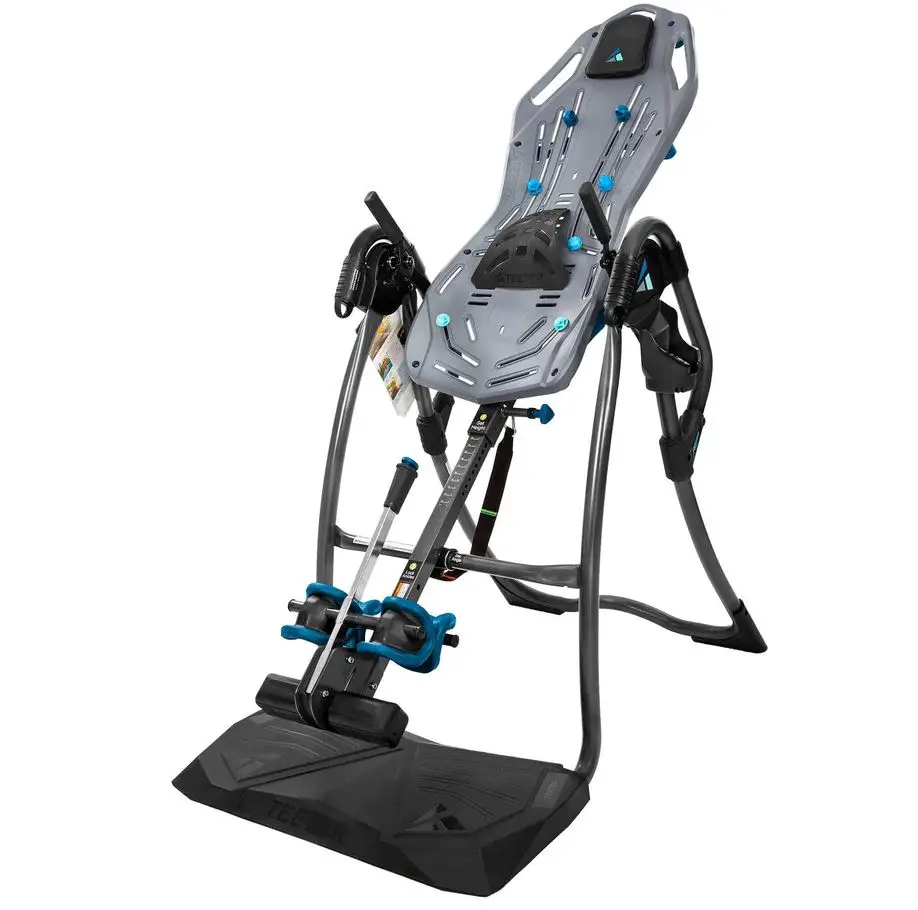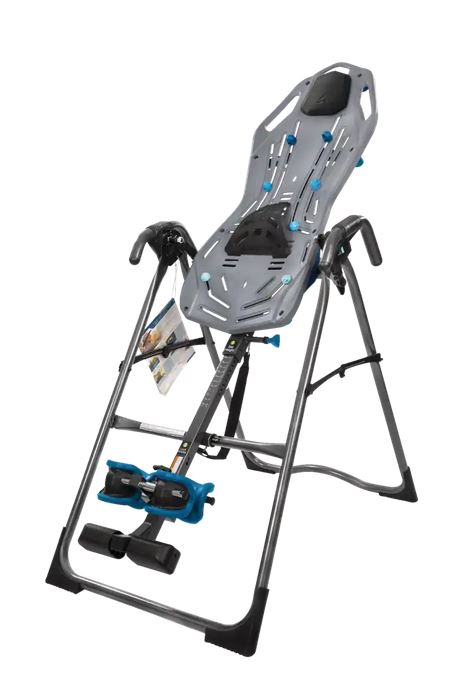Inversion therapy can relieve medical conditions such as herniated disk kidney stones, back pain and compressed spinal disk; alternatively, inversion therapy can also be used to relax or stretch joints.
Inversion therapy is when an individual is suspended upside down to stretch the spine and relieve back pain. The therapy originates from 400 BC, where Hippocrates would hang individuals upside down to stretch the spine and ease gravity’s pressure on the spine. Over time, poor posture and gravity can cause stress on the spinal disc resulting in a herniated disk or back problems.

Inversion therapy decompresses the spine and the surrounding structures, causing them to stretch. The spinal disk creates a vacuum through the stretching, allowing the herniated disk to go back into position, thus decreasing pressure on the spinal nerve.
Today, therapy is safer and more comfortable due to technological advancements and devices.
What are the types of inversion therapy?
- Inversion tables
- Inversion chairs
- Gravity inversion boots
Are inversion tables suitable for herniated disks?
Having a herniated disc can be very painful. Inversion therapy can be good because it offers relief from pain and reduces the need for surgery. Inversion therapy provides a more conservative option, with back surgery being the most aggressive. Medical professionals recommend inversion therapy first because it has a higher success rate, and patients will not need surgery.
Inversion tables are not safe for everyone: Hanging upside down is risky for individuals with underlying serious medical conditions for example high blood pressure and heart disease. Inversion therapy offers short-term back pain relief. It is not an effective long-term treatment and is not a guarantee against surgery because back problems are very complex. Therefore, it is a good form of therapy for those deemed safe to use it.
How to use an inversion table
Under the guidance of your physical therapist, lie back and strap yourself onto the inversion table until your head is a bit lower than your heart.
Try to tip back at 30 degrees or as low as 10 degrees. Avoid leaning back all the way.
Buckle up to ensure that you do not slip off.
First, try it for 1 or 2 minutes and see how your body responds to it. Do it in short spans and gradually increase. Try inversion tables for about two weeks for five to ten minutes twice a day.
Come back slowly to an upright position. Overly aggressive inversion can be counter-productive; if you tip up quickly, you may trigger muscle spasms, trauma or disk pain in your back.
Combine inversion therapy with other stretches and stay flexible.
Benefits of inversion therapy

Reduced need for surgery is the advanced form of medical treatment to treat herniated disks. The zero-gravity nature of inversion therapy can reduce the compression and pressure caused by sitting and bending. In addition, it can prevent disability from back problems and the need for spinal surgery.
Practicing inversion therapy may make you feel more flexible and improve posture. You might find it easier to bend and reach things. Over time, the spine’s micro-movements help your body become more robust.
The therapy has been proven to relieve and prevent back problems. The study has shown that patients who have back pain practice inversion therapy at 60 degrees report reduced pain after nine weeks.
As a result of the stretching and the circulatory benefits associated with inversion therapy, you can help prevent future health-related issues, including improved spinal health.
Possible side effects associated with inversion tables
There is little clinical evidence for inversion tables, and your doctor may not recommend inversion tables if you have specific such as pregnancy or obesity.
You can experience dizziness or muscle strain as one of the side effects, so it is advisable to start in shorter increments as you get used to the process.
Inversion tables can cause your heart to slow down, and the blood pressure rises and is very risky for individuals with high blood pressure, heart disease, and stroke.
Risk injury: If you have arthritis, inversion therapy can lead to or put you at risk of joint injury
Conclusion
Inversion tables are becoming mainstream therapy for treating back-related problems. According to research, inversion tables may relieve back pain, but there is little evidence that the treatment provides long-term relief. Always consult with your doctor before seeking inversion therapy to ensure that it is safe and suitable for you.
Listen to your body as you perform the movements to avoid additional risks associated with it. Alternatively, you can do yoga to get the same benefits that you would through using inversion tables but with the guidance of a certified yoga instructor.





